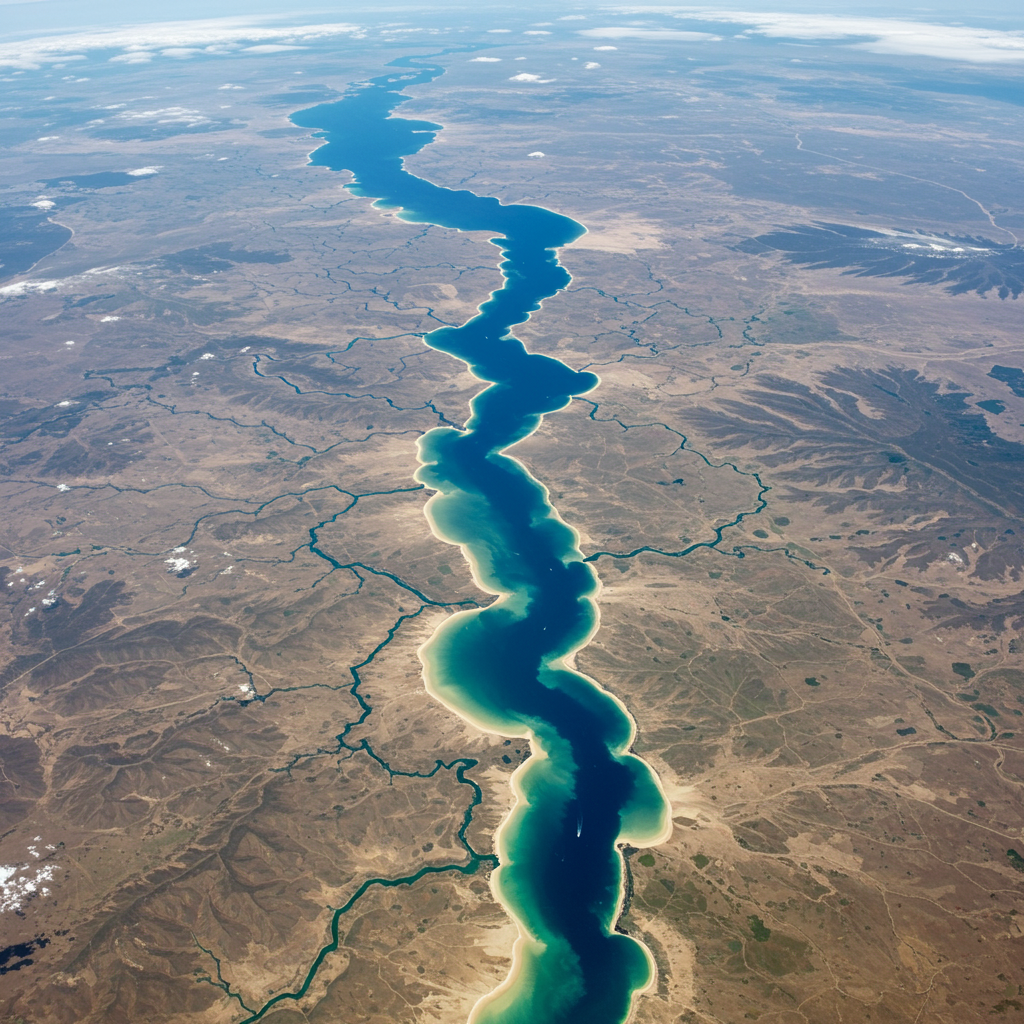Imagine a new ocean slowly carving its way through a continent, fundamentally redrawing the map. This dramatic geological transformation is already underway in East Africa, driven by powerful forces deep within our planet. Scientists have now uncovered a key player in this monumental process: a rhythmic, pulsing movement beneath the surface that they’ve likened to Earth’s very heartbeat.
Africa’s Tectonic Crucible: Where Continents Split
The focus of this groundbreaking discovery is the Afar region of Ethiopia, a geological hotspot often described as a crucible of continental breakup. Here, three colossal sections of the Earth’s crust – the Arabian, Nubian, and Somalian tectonic plates – are slowly, inexorably pulling apart. This convergence point, known as the Afar Triple Junction, is one of the rare places on Earth where the intricate process of continents splitting can be directly observed on land.
As these plates drift in different directions, the land in the Afar Triangle is stretching and thinning. Geologists predict that over millions of years, this rift valley will drop below sea level, allowing seawater to flood in, connecting to the Red Sea and eventually forming a brand-new ocean basin.
Uncovering the Deep Earth’s Secrets
To understand the immense forces propelling this separation, an international research team, including scientists from the University of Southampton and Swansea University, delved into the chemical makeup of volcanic rocks found across the region. They collected and analyzed over 130 samples from Afar and the neighboring Main Ethiopian Rift, using sophisticated analysis and modeling to trace their origins from the deep mantle.
The Discovery: A Pulsing Mantle Plume
Their findings revealed something unexpected: the molten material rising from deep within the Earth beneath Afar isn’t a steady, uniform flow. Instead, it’s dynamic, rising in distinct, rhythmic pulses. These pulses carry unique chemical signatures, manifesting as repeating patterns – almost like geological barcodes – in the erupted volcanic rocks across the rift system.
This striking pattern is the evidence for what scientists are calling a pulsing mantle plume, likened metaphorically to a “heartbeat.” Professor Tom Gernon of the University of Southampton noted, “The chemical striping suggests the plume is pulsing, like a heartbeat.”
How Surface Plates Influence Deep Earth Forces
Crucially, the research shows that this deep Earth pulse isn’t isolated; its behavior is intimately tied to the overlying tectonic plates. The speed at which the plates are pulling apart and the thickness of the crust above significantly influence how efficiently and regularly the molten material rises.
In areas where the crust is thinner or spreading faster, like the developing rifts connected to the Red Sea, the mantle pulses flow more easily and regularly, similar to a pulse moving through a narrow artery. Conversely, thicker sections of lithosphere can impede the flow, creating more condensed chemical “stripes.” This demonstrates a fascinating two-way interaction: deep mantle processes drive surface changes, while the surface’s structure simultaneously influences the behavior of the deep mantle.
Reshaping Our Understanding of Earth’s Interior
This discovery has profound implications for how scientists view the connection between Earth’s deep interior and its surface. It reveals that mantle upwellings are not just passive, one-way forces pushing upwards. They are dynamic entities that respond to their environment, specifically the motion and characteristics of the overlying plates.
This dynamic relationship helps explain surface phenomena such as the location and intensity of volcanism and earthquakes, and provides crucial insight into the mechanics of continental breakup. The study suggests that these deep mantle pulses can even flow laterally beneath the plates, channeling volcanic activity precisely to the areas where the crust is weakest and thinnest, further facilitating the rifting process.
While the ultimate formation of a new ocean basin in East Africa is a process unfolding over millions of years, this research offers a vital new window into the powerful, rhythmic forces deep beneath our feet that are constantly reshaping the face of our planet. Future studies aim to precisely quantify the rate and mechanisms of this complex mantle flow.




